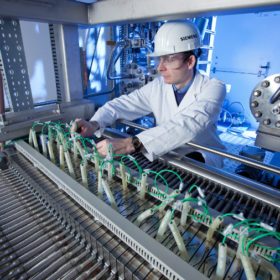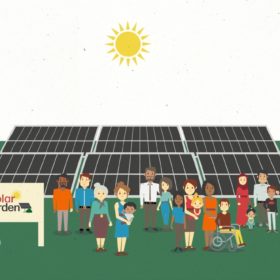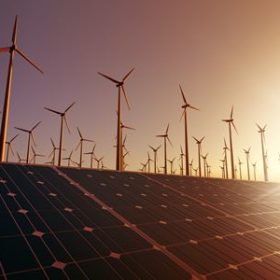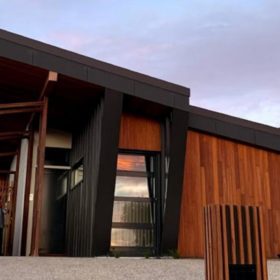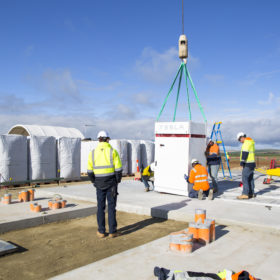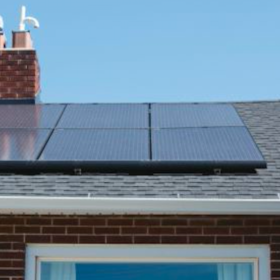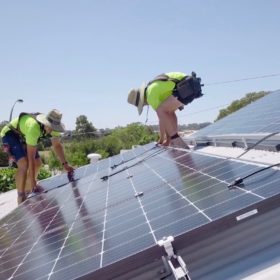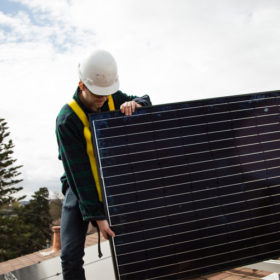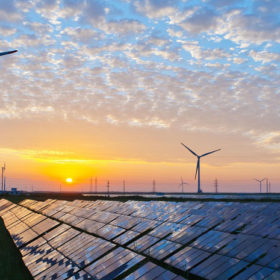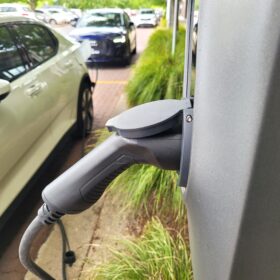Australian Hydrogen Council supports emerging export market
The move by Standards Australia has set the stage for Australia to play an important role in the growing hydrogen economy. Eight international standards for hydrogen were adopted in the process. The time is now, argues the Australian Hydrogen Council Fiona Simon, for these standards to be adopted into regulations to enable a new hydrogen export industry.
Australia’s first large scale solar garden – city dwellers of the world, unite!
Almost a third of Australians are locked behind the solar barrier, they’re renters, tenants, urban apartment-dwellers who don’t have the luxury of installing their own solar PV. However, now city-dwellers can participate in the solar transition too, by becoming members of the Haystacks Solar Garden which operates in much the same way as community garden.
ANU study shows Australia still leading per capita renewable uptake, but policy is stifling progress
New analysis from The Australian National University along with recently published figures from the Clean Energy Regulator demonstrate that Australia remains the world leader in wind and solar deployment per capita, particularly rooftop PV. However, federal policy is failing to invest in desperately needed infrastructural upgrades.
Forget 7-star luxury, Adelaide is now home to a 10-star sustainable home
South Australia’s first ten-star home was completed last month, a home that consumes twenty times less energy than the average Australian household, in part thanks to its Fimer React 2 solar hybrid system.
Neoen completes Hornsdale big battery expansion
The 50% expansion of Neoen’s Hornsdale Power Reserve, otherwise known as the Tesla Big Battery, has been successfully completed. If testing of the upgraded battery goes well, Hornsdale could begin to function with an expanded remit of synthetic inertia services, a capability which could have significant impact on regulatory changes.
Exoskeletons for solar panel mounting
Endesa, the Spanish unit of Italian power group Enel, is using a new technology in the construction of three solar parks in southern Spain.
We’re doing it wrong, UniSA study shows residential solar panels are facing the wrong way
A University of South Australia study has demonstrated that while solar panels in Australia are typically installed facing north to catch most of the sun’s arc, if you’re looking to export your solar into the grid you should really be orientating your panels to minimise the discrepancy between the times of peak use and peak production.
WA launches new solar buyback scheme, encouraging panel orientation, batteries, and EVs
The Western Australian Government has launched its new Distributed Energy Buyback Scheme, a way for homes, schools, and not-for-profits with rooftop solar, energy storage, and even electric vehicles (EVs) to earn some money back from the surplus energy they export to the grid.
The SEC had a plan to manage SA’s rooftop solar abundance, but the state government simply flicked the switch?
Distributed rooftop electricity generation means that many more parties have a stake in rule changes and amended standards for equipment than when a few coal-fired plants ruled the NEM. The South Australian Liberal Government seems to have eschewed consultation with overriding new rules that could hurt many small solar businesses and shake the trust of solar households.
Distributed and large-scale renewables improve reliability outlook for Australia’s main grid
The reliability of Australia’s power supply has improved driven by the addition of new solar and wind capacity, making summer blackouts less likely, the Australian Energy Market Operator finds in its latest report. In light of the aging coal fleet and scheduled plant closures, timely commissioning of new generation, storage and transmission investment will be critical.
